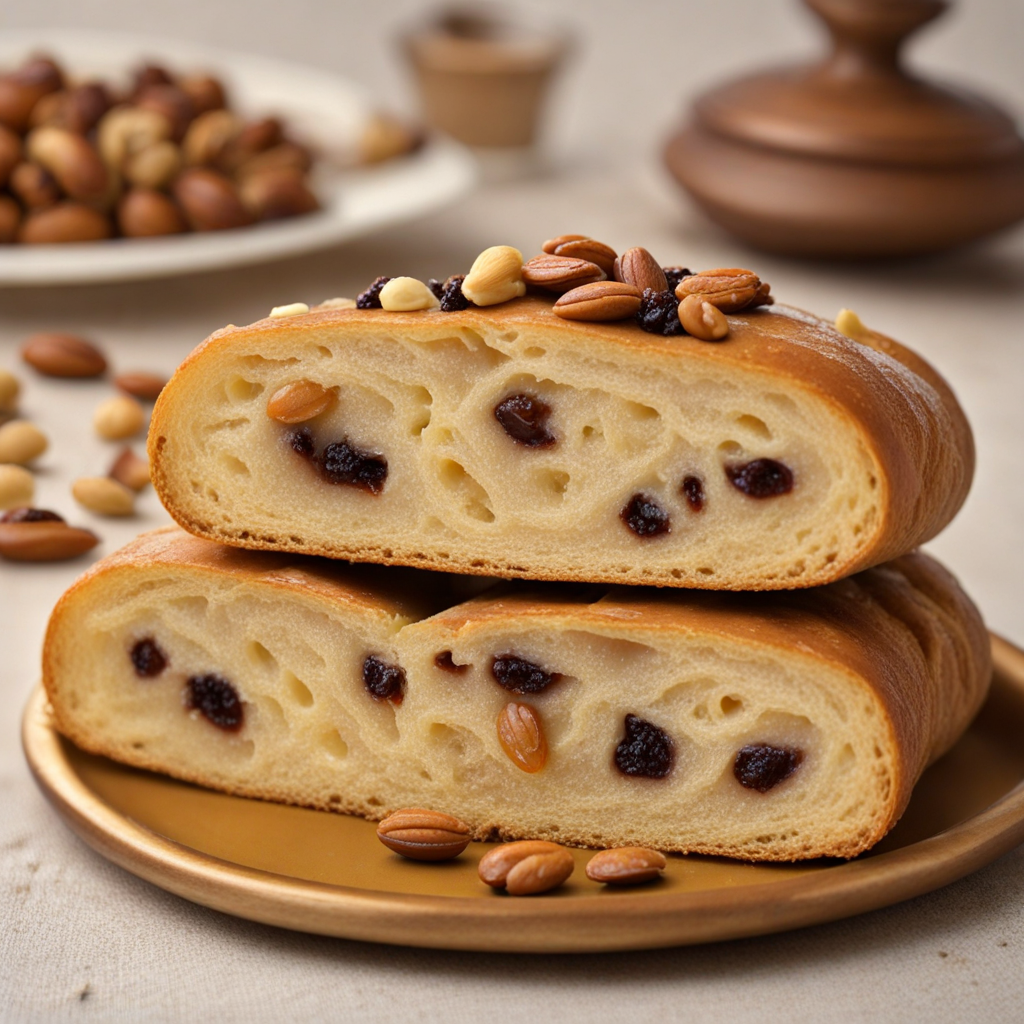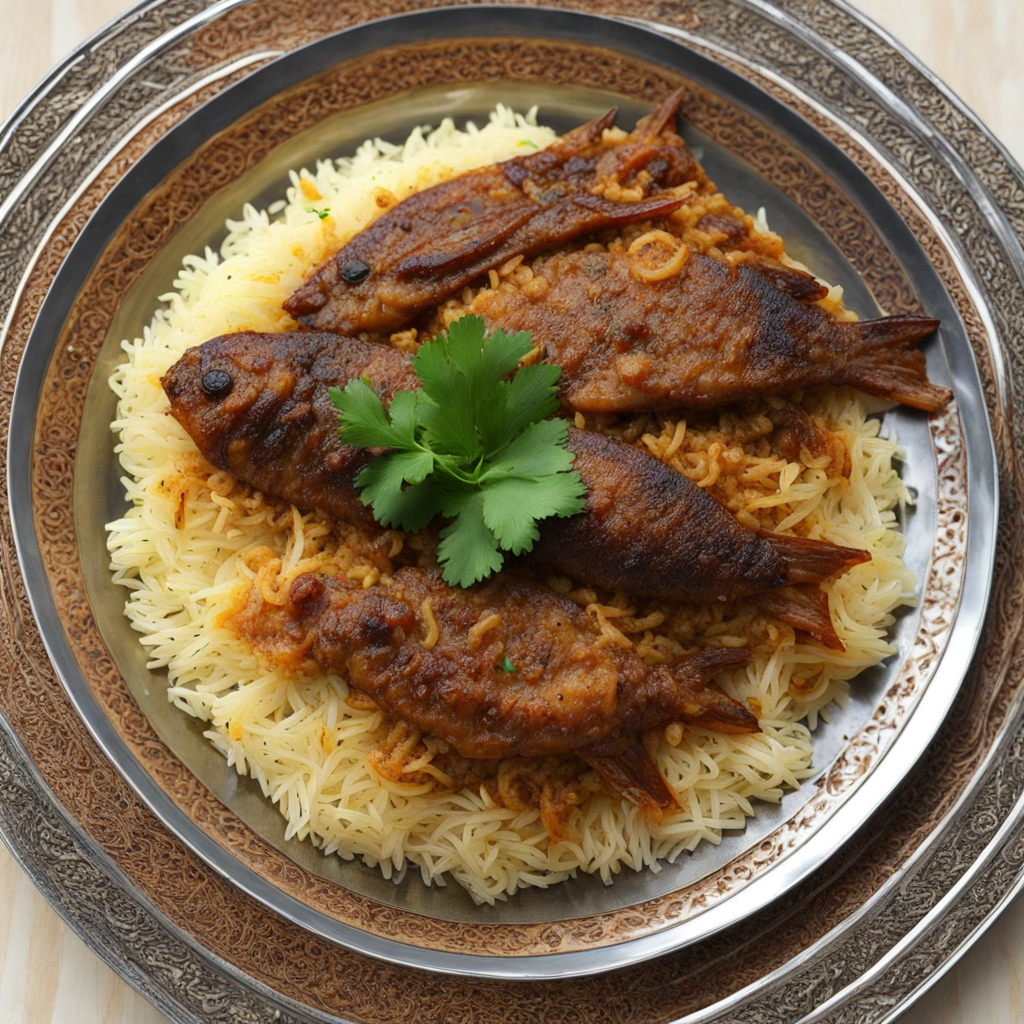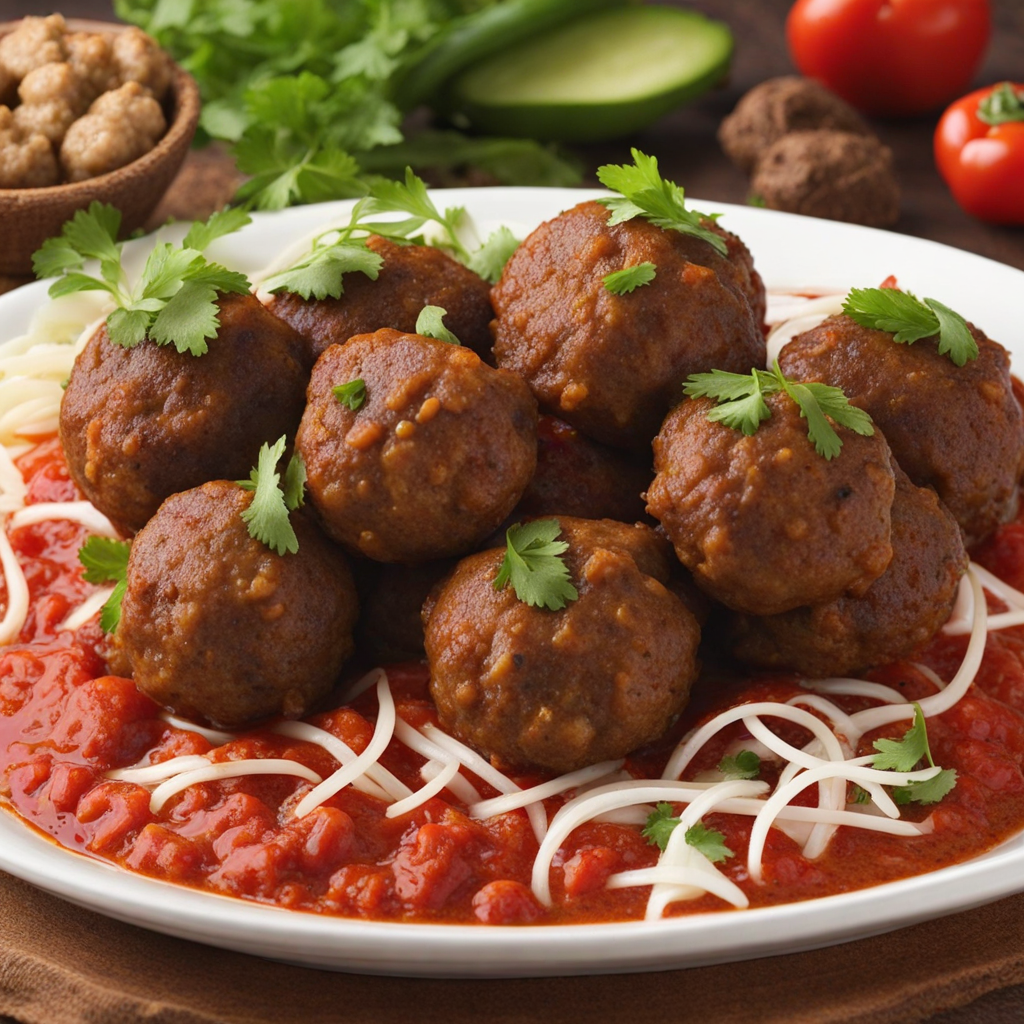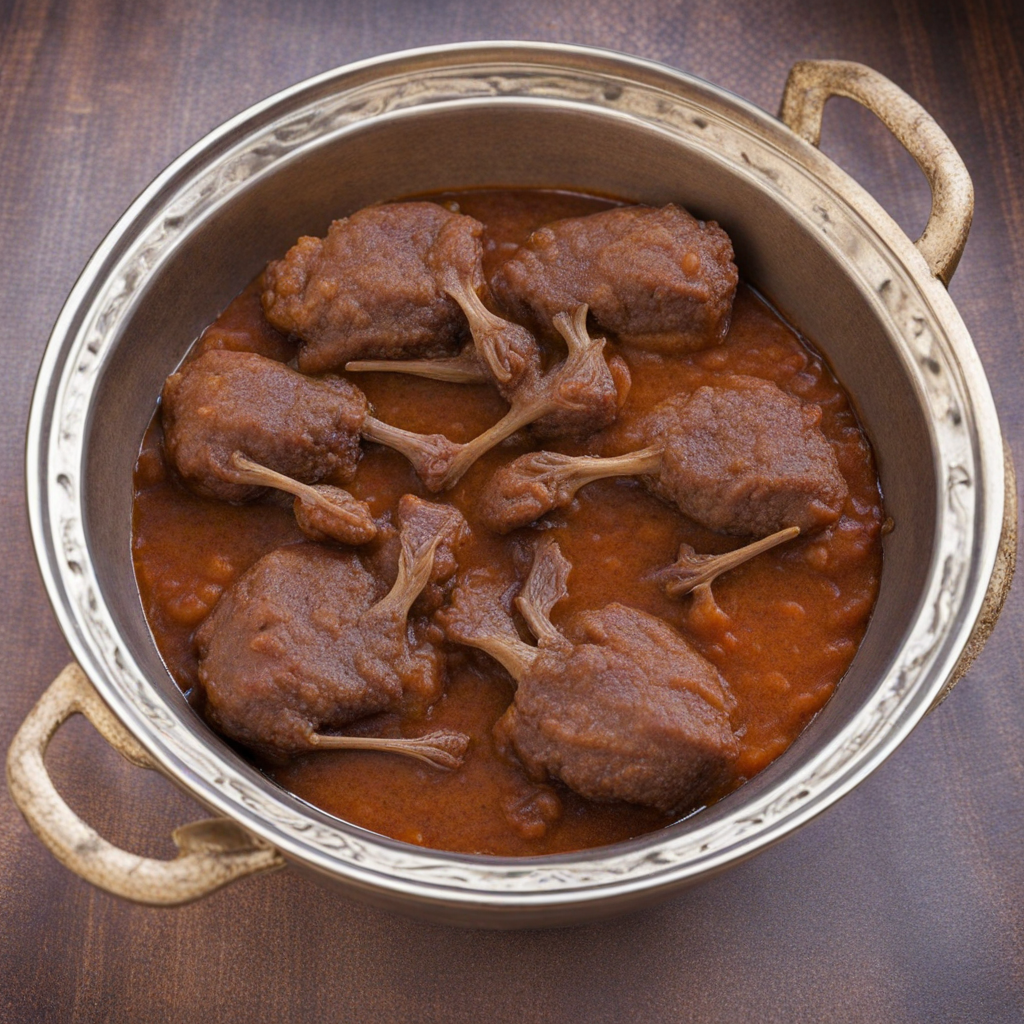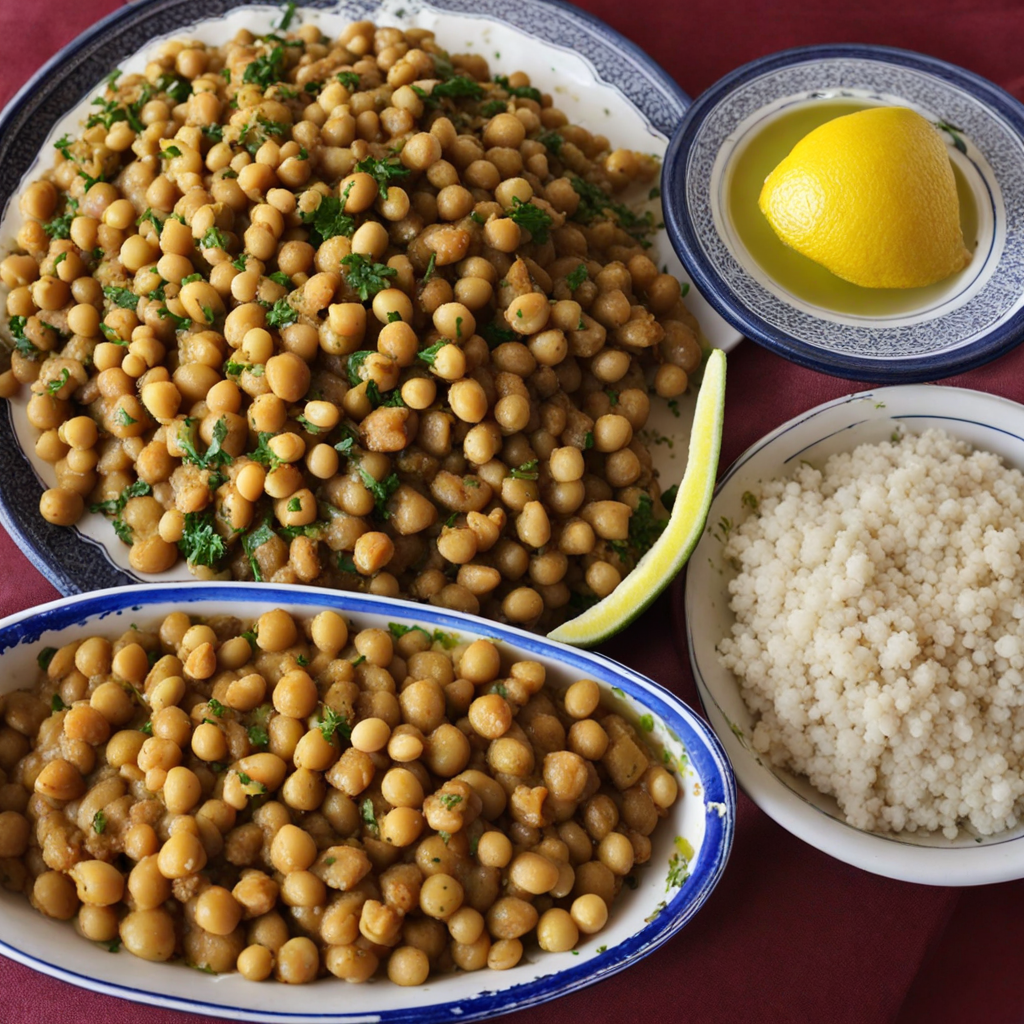Mudaffara
Mudaffara is a traditional Sudanese dish that showcases the rich culinary heritage of the region. At its core, Mudaffara consists of a hearty combination of lentils and rice, typically seasoned with a blend of spices that may include cumin, coriander, and garlic. This dish is often accompanied by a vibrant tomato sauce or a spicy pepper sauce, adding depth and flavor that elevates the humble ingredients. The texture is a delightful mix, with the lentils providing a creamy consistency while the rice brings a fluffy bite, making each mouthful satisfying and wholesome. What sets Mudaffara apart is its versatility and the various ways it can be served. It can be enjoyed as a standalone dish or paired with grilled meats, particularly lamb or chicken, which complement the earthiness of the lentils. Many variations exist depending on regional preferences, with some adding vegetables or fried onions to enhance the flavor profile. The dish is often garnished with fresh herbs, such as cilantro, which adds a refreshing touch, making it a feast for both the eyes and the palate. Eating Mudaffara is not just about savoring the flavors; it's an experience steeped in tradition and sociability. It is commonly shared among family and friends, embodying the spirit of Sudanese hospitality. The warming spices, combined with the comforting textures, create a dish that feels both nourishing and celebratory. Whether enjoyed at a festive gathering or a casual meal, Mudaffara invites you to explore the enchanting tastes of Sudan, making it a must-try for adventurous food lovers.
How It Became This Dish
The History of مضفرة (Mufarra) #### Origin and Etymology Mufarra, a traditional Sudanese dish, is a rich and flavorful food that encapsulates the essence of Sudanese culinary heritage. The term "مضفرة" translates roughly to "mixed" or "combined," which reflects the dish's nature—a harmonious blend of ingredients that come together to create a sumptuous meal. The history of Mufarra is deeply intertwined with the agricultural practices, cultural exchanges, and historical events that have shaped Sudan over centuries. The origins of Mufarra can be traced back to the indigenous cooking practices of the Sudanese people, where the use of local grains, legumes, and spices was prevalent. Sudan, being a crossroads of various cultures and civilizations, absorbed influences from neighboring regions such as the Arabian Peninsula, sub-Saharan Africa, and the Mediterranean. This melting pot of influences contributed to the unique flavors and preparation methods that define Mufarra today. #### Cultural Significance Mufarra is more than just a dish; it plays a vital role in Sudanese culture and social gatherings. Traditionally, it is prepared during significant events such as weddings, religious festivals, and family reunions. Its communal nature fosters a sense of togetherness, as it is often served on large platters, encouraging diners to share and enjoy the meal collectively. The dish is also symbolic of hospitality and generosity. In Sudanese culture, offering food to guests is a sign of respect and warmth, and Mufarra, with its hearty ingredients and satisfying flavors, epitomizes this spirit. The preparation of Mufarra can be a communal activity, often involving family members who gather to cook, share stories, and bond over the process. Such gatherings reinforce social ties and cultural identity, making Mufarra a culinary emblem of community life in Sudan. #### Ingredients and Preparation Mufarra typically consists of a base of cooked grains, such as rice or millet, combined with a variety of proteins, including chicken, beef, or lamb, and vegetables. The dish is seasoned with an array of spices, such as cumin, coriander, and chili, which add depth and warmth to the flavors. The meticulous layering of ingredients is what distinguishes Mufarra from other dishes, creating a visually appealing and aromatic experience. The preparation of Mufarra involves several steps. First, the grains are cooked separately until tender. The protein is then marinated with spices and sautéed until golden brown. Vegetables are often added to the mix, enhancing both flavor and nutrition. The final assembly sees the grains placed at the base, followed by the meat and vegetables, with additional garnishes like fried onions or nuts sprinkled on top. The dish is then served hot, often accompanied by traditional Sudanese sauces and relishes, which elevate the dining experience. #### Historical Development Over the centuries, the development of Mufarra has been influenced by various historical events and exchanges. The region's agricultural practices evolved with the introduction of new crops and techniques, particularly during the time of the Mahdist Revolution in the late 19th century. The increased availability of ingredients allowed for greater culinary experimentation and the refinement of traditional recipes. In the early 20th century, as Sudan underwent significant political and social changes, the culinary landscape also shifted. The urbanization of Khartoum and other major cities brought diverse populations together, each contributing their unique flavors and cooking methods to the existing culinary repertoire. This period saw the fusion of Mufarra with other regional dishes, leading to variations in its preparation and presentation. The globalization of food culture in the late 20th and early 21st centuries has further transformed Mufarra. As Sudanese diaspora communities settled around the world, they took their culinary traditions with them. Mufarra has found its way onto restaurant menus and home kitchens abroad, introducing new audiences to its rich flavors and cultural significance. This exposure has sparked interest in traditional Sudanese cooking, leading to a renaissance of interest in authentic recipes and culinary practices. #### Modern Interpretations and Challenges In contemporary times, Mufarra continues to be celebrated in Sudan and among the Sudanese diaspora. While traditional methods of preparation are still cherished, modern interpretations have emerged, adapting to the availability of ingredients and contemporary dietary preferences. For instance, variations that cater to vegetarian or vegan diets have become popular, utilizing lentils, chickpeas, and a variety of vegetables as substitutes for meat. However, the preservation of Mufarra and other traditional dishes faces challenges in the modern world. Rapid urbanization, changing lifestyles, and globalization have influenced eating habits, often leading to a decline in the preparation of traditional meals. Many Sudanese families, particularly in urban areas, may opt for convenience foods or fast meals, risking the loss of culinary heritage. To combat this trend, efforts are being made to document and promote traditional Sudanese cooking. Culinary schools, community organizations, and social media platforms are playing an essential role in reviving interest in traditional recipes and cooking techniques, including Mufarra. By sharing stories, techniques, and the cultural significance of such dishes, the Sudanese community aims to keep their culinary traditions alive for future generations. #### Conclusion Mufarra is a dish that embodies the rich tapestry of Sudanese culture and history. Its origins reflect a blend of indigenous practices and external influences, resulting in a meal that is both hearty and flavorful. The cultural significance of Mufarra as a symbol of hospitality and community reinforces its importance in Sudanese social life. As this dish continues to evolve in response to modern challenges, it remains a powerful reminder of the enduring legacy of Sudanese culinary traditions. Whether enjoyed in a bustling urban setting or a quiet family gathering, Mufarra serves as a delicious testament to the importance of food in nurturing culture and community.
You may like
Discover local flavors from Sudan



